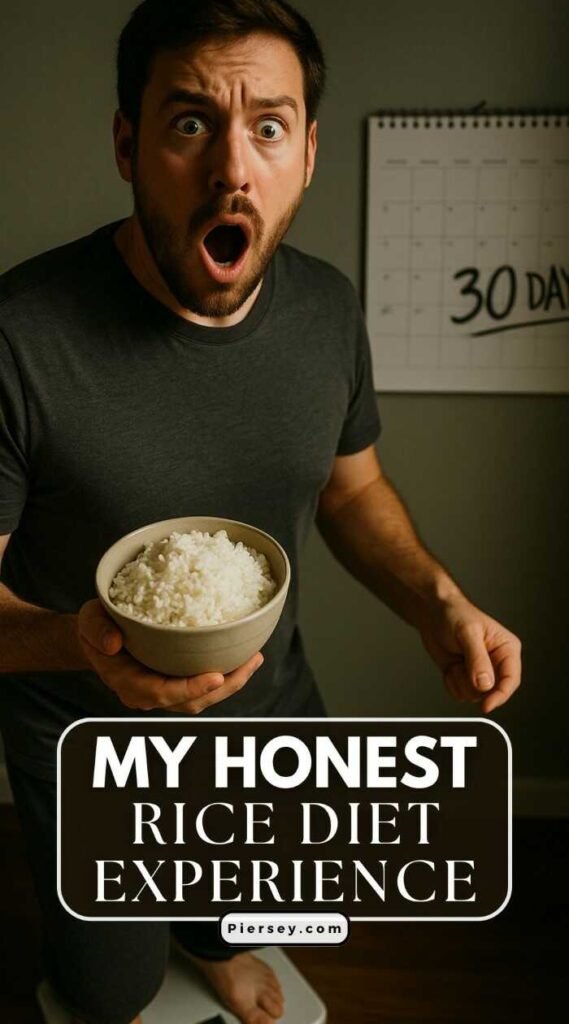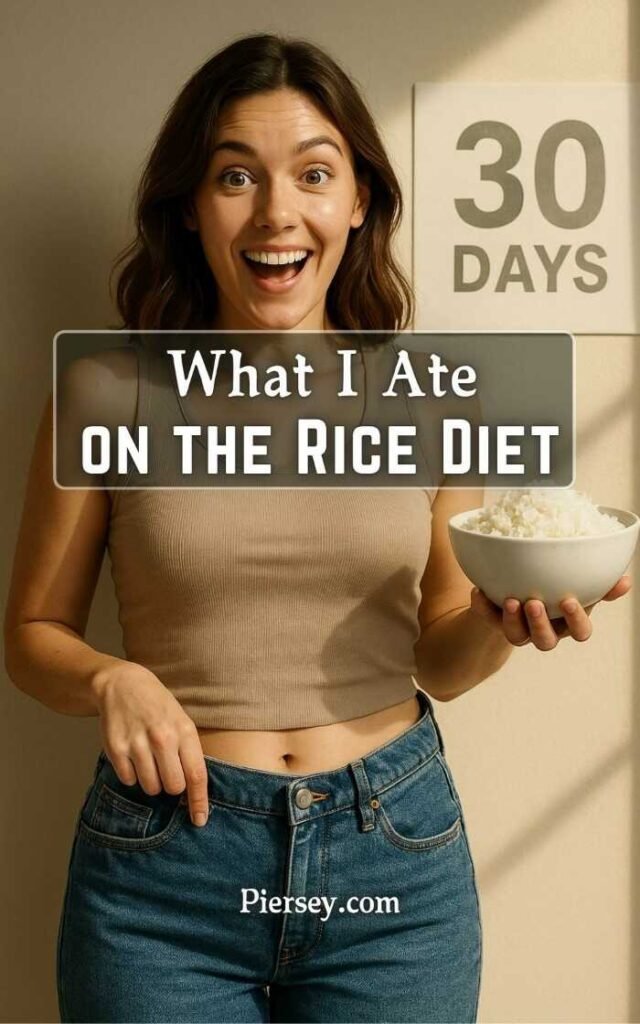If you’d told me a year ago that eating rice, jam, and orange juice would help me lose almost 20 pounds, I’d have laughed out loud. For nearly a decade I lived low-carb everything — keto, carnivore, animal-based. Carbs were the enemy. And then one day I was staring at a scale that just kept creeping up and a body that felt inflamed and sluggish. That’s when I decided to test the one diet I used to roll my eyes at — the Rice Diet.
Spoiler: it worked. I lost 19 pounds in 30 days and felt lighter in every way possible.
👇 If you’d rather watch the video version, it’s right below 👇
Why I Even Did This in the First Place
Before the rice, my life revolved around beef. Two to three pounds a day — easy. Butter, eggs, salt, water. It was simple and for a while it worked. But long-term? Not so much. I developed fatty liver and iron overload (thanks to genetics and all that heme iron). Add in a spine surgery that sidelined me, and suddenly even walking to the fridge felt like a workout.
That’s when I stumbled onto Dr John McDougall and his videos about starch-based eating. Rice? Potatoes? Fruit juice? For someone who spent years on rib-eyes and bacon, it sounded insane — but so did staying stuck in pain. So I dove into research on Dr Walter Kempner’s original Rice Diet from 1939, which was designed to reverse high blood pressure and kidney disease. People weren’t just healing — they were shedding 50 to 100 pounds too.
I was intrigued but terrified. Could decades of “carbs are evil” brainwashing really be wrong? Turns out, maybe yes.
(I talk about that exact moment of questioning everything in Why I Quit Keto & Carnivore After 9 Years — the mindset shift was the hardest part.)
Easing Into Carbs Again
Before I jumped into a strict rice-and-fruit plan, I had to rebuild my carb tolerance. I started slow — adding potatoes, oats, fruit, and yes, rice. Some days I ate five bananas before noon and felt like I was breaking a law. My body didn’t explode — it actually calmed down. Energy stabilized, digestion smoothed out, and the sugar crashes I expected never came.
The real surprise? After years of meat-heavy meals, I wasn’t craving protein anymore. I was craving comfort. And rice was weirdly comforting.


What the Rice Diet Actually Looked Like for Me
For 30 days, my meals looked like this:
- Lunch: 1 cup (200 g) uncooked white rice cooked with onion and garlic, a few tablespoons of tomato ketchup.
- Dinner: The same rice but plain — with jam. Yes, jam.
- Drinks: 1 liter of orange juice daily + coffee and water on repeat.
That’s it. No oils, no animal products, no snacks. And the wildest part? I never felt starving. The simplicity actually made it easier. No endless meal planning or macro tracking — just eat, done.
I used to joke that I was the least likely person on Earth to go vegan, yet three weeks in, I realized I had — accidentally.
(I mentioned this exact mental switch in Stop Relying on Willpower to Lose Weight — sometimes it’s not discipline, it’s just removing decision fatigue.)
My Results After 30 Days
The scale dropped steadily — half a pound to a pound a day. By the end of the month, I was 19 pounds down. Sure, some of that was water weight, but I felt different — lighter, less inflamed, and that constant dull ache from my liver had basically disappeared.
My macros looked crazy on paper — about 90 percent carbs, maybe 5 percent protein and 5 percent fat at most. I was probably getting only 2–3 grams of fat a day, which is nothing compared to what I used to eat. Yet my energy was stable all day and my digestion was easier than ever.
Physique-wise, I wasn’t suddenly shredded, but I could see bloating down and my clothes fitting better. Even my skin looked clearer. Taste buds changed too — orange juice now tastes like liquid candy so I have to dilute it. Plain rice feels like a treat. Who am I?
Lessons I Learned Along the Way
1. Carbs aren’t the enemy. After years of fear-mongering about insulin and fat storage, I can finally say — they can work for you.
2. Fat doesn’t always equal fuel. Too much fat can actually slow digestion and mess with energy. Keeping it low was a game changer.
3. Simplicity wins. Repeating the same meals made life stress-free and cut out binge behaviour completely.
The best part? My relationship with food changed. No more tracking, no more guilt. I just eat and move on — and that’s liberating.
(I touched on that shift toward balance in The Brutal Truth About Keeping Weight Off — because maintenance is a whole different battle.)


Any Side Effects?
Not many. Energy was steady, digestion smooth. I think easing in with starches like potatoes and oats helped avoid the bloating that can hit people going high-carb too fast. White rice being low fibre also made things gentler.
If anything, the biggest adjustment was mental — learning to trust carbs again. There’s so much nutrition noise online that you start thinking every bite needs a macronutrient strategy. Sometimes you just need a plate of rice and quiet.
The Takeaway
Is the Rice Diet sustainable forever? Probably not in its strictest form. But as a reset — for my liver, my relationship with food, and my mind — it’s been amazing. It’s simple, cheap, and it worked.
I’m not claiming it’s for everyone, but for me, it’s been a lifeline that proved carbs aren’t the villain — they’re the comeback story. Nineteen pounds down in thirty days and feeling better every week. The plan now? Keep testing, keep sharing, and maybe add some gym sessions to see how far I can go.
So yeah — if you’ve been afraid of carbs, maybe it’s time to give them another chance.

